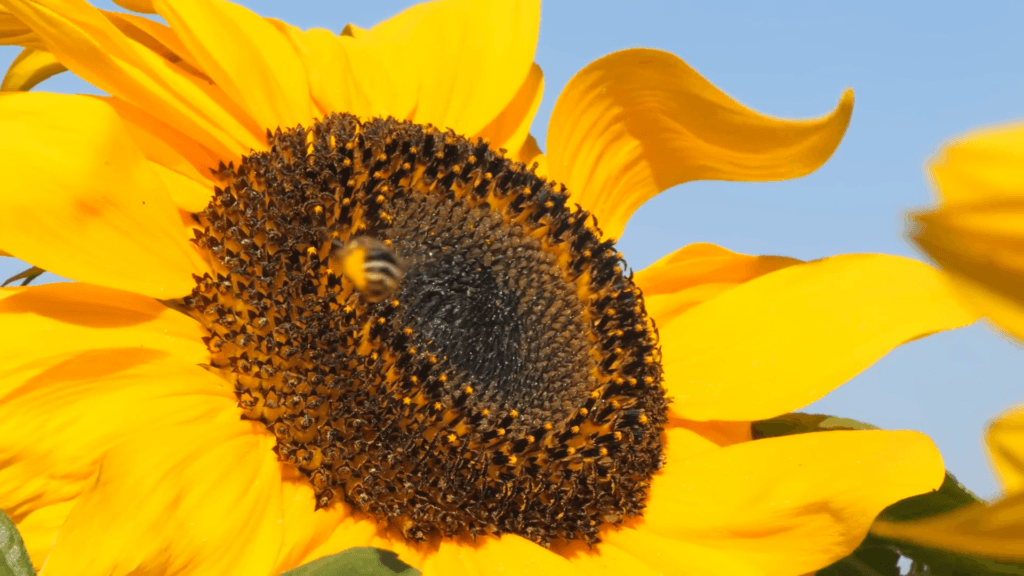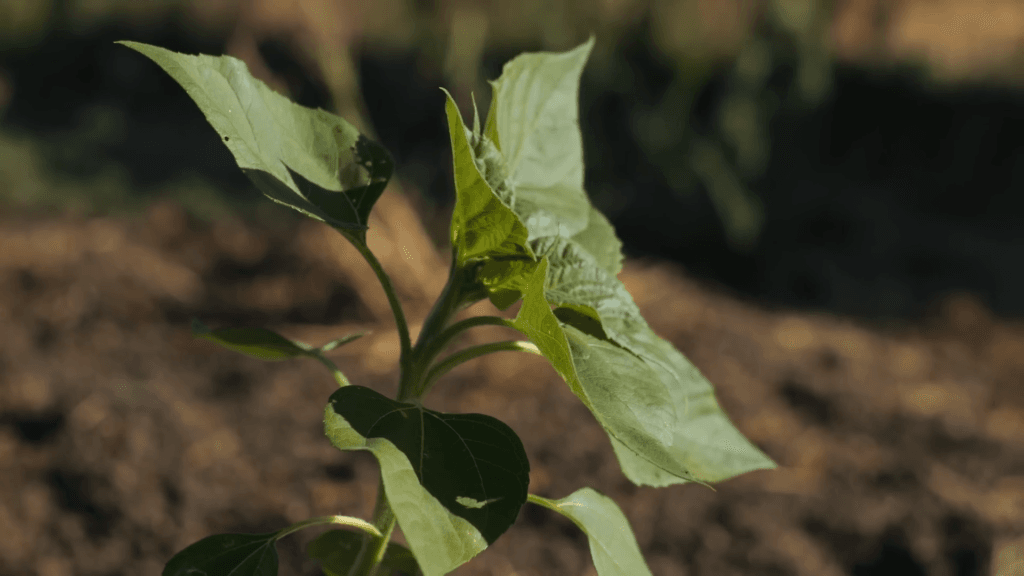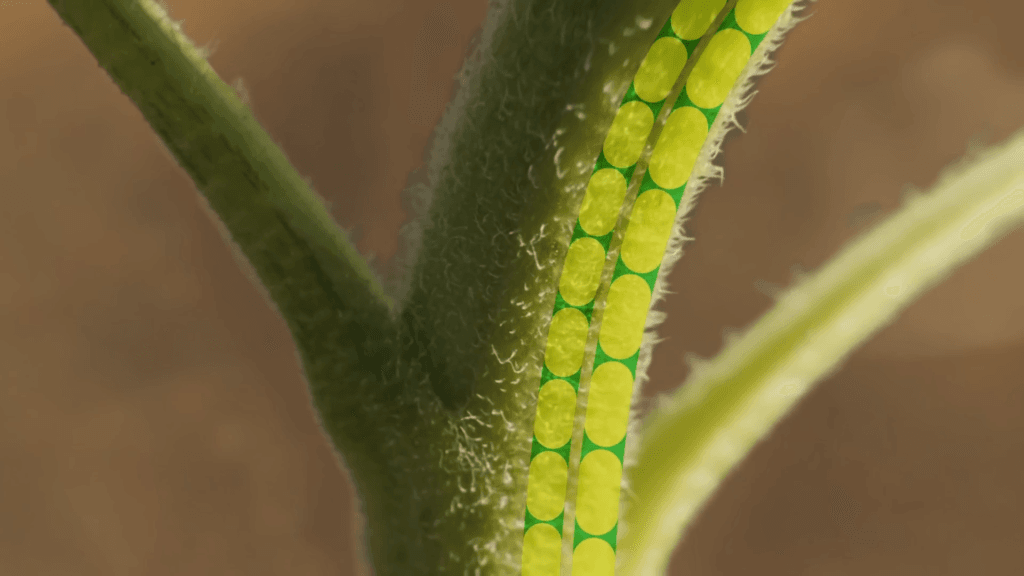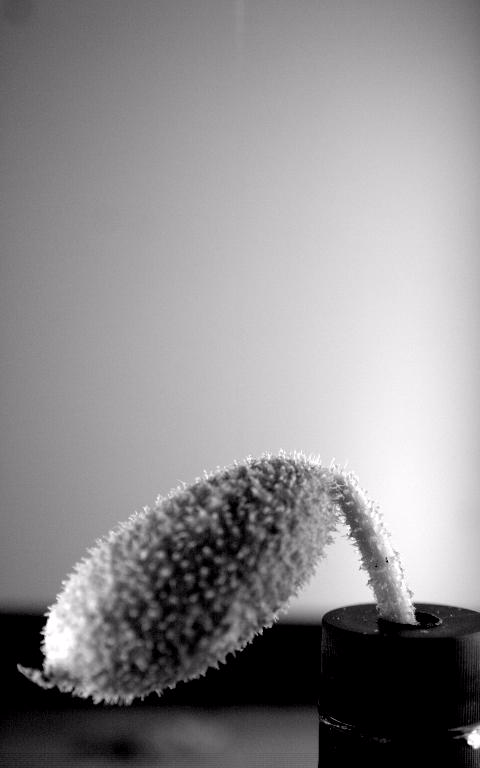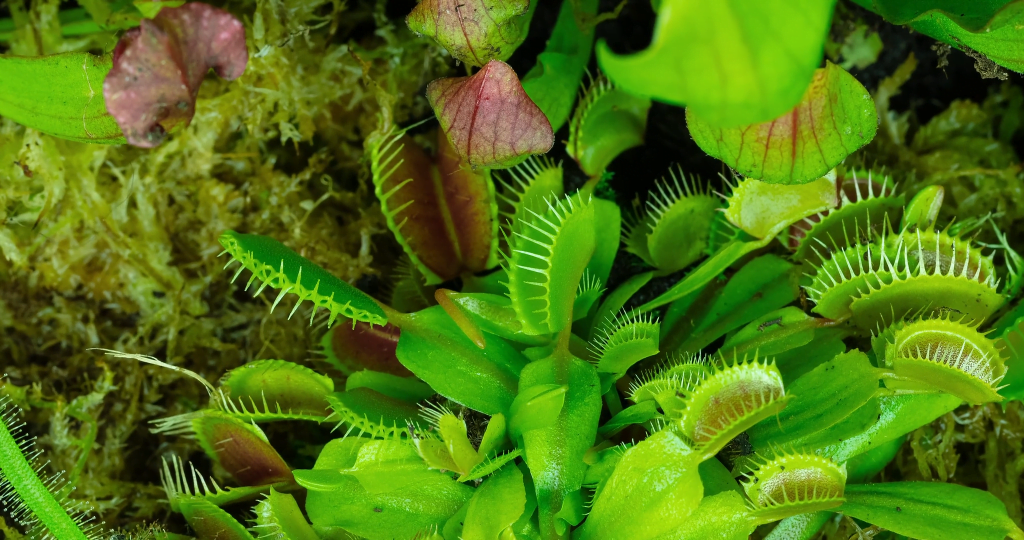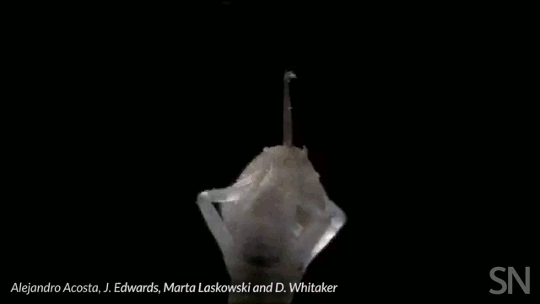Sunflower blossoms face east, presenting their blooms to the morning sun and the bees that come exploring with it. But before they grow their massive flower, each plant spends the day following the sun, greeting it in the east and tracking it westward all day. Overnight, the plant reorients eastward to start over again. The motion occurs thanks to the plant internally shifting its water supply. During the day, it swells cells on the east-facing side of the plant, gradually lengthening that side and causing the plant to tip westward. At night, it switches to swelling the west-facing side. Why go to all this trouble? By following the sun, the plant is able to photosynthesize and grow more effectively. (Video and image credit: Deep Look)


